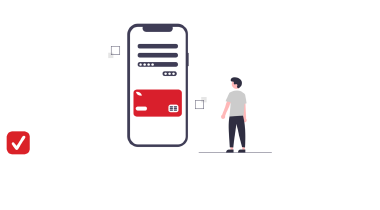Invoice finance software, a new way of financing your growth

It is difficult to find an independent definition, but invoice financing is often referred to as debt financing, factoring, discount, sales financing or supply chain financing. Simply put, when a company receives an upfront payment for its non-paid sales invoices, typically between 70% and 100% of the invoice value, it does not need to wait for its customers to pay. Instead, its entire sales book, outstanding loans and invoices are a large tranche of cash that can be released in one go as an upfront payment for all invoices together.
Factoring invoices (also known as factoring receivables) is when an entrepreneur sells unpaid invoices to a lender. Invoice financing or factoring companies offer a credit line to companies that need cash flow support. In return for quicker access to cash, firms pay a fee, usually a percentage of the amount borrowed.
Invoice finance rates
The cost of invoice financing depends on the type of invoice financing for which you sign up, the value of outstanding invoices of your company and invoice finance company. Invoice financing involves different interest rates and fees, which makes it difficult to compare it with traditional business loans. Factor fees are normally calculated for the total value of the invoice and the weeks it takes the customer to pay.
If outstanding invoices cause cash flow problems for your business, credit options are available to you. This article will give you a clear understanding of how invoicing factors and invoice financing work, so that you can evaluate and select the most suitable and identified financing plan for the company that best works with your business. You should also be familiar with the accounting factors offered by other providers of corporate finance.
Small business invoice financing
Invoice financing and invoice factoring finance a company that needs cash to achieve its objectives such as preparing Payslips, paying suppliers or buying more inventory. Compared to many financing options, applications and processes for small businesses, invoice financing and invoice loans are the fastest and easiest way to finance your business. Similar to invoice factoring, invoice financing solutions solve cash-flow problems by allowing small business owners to bring forward unpaid bills.
As we have already mentioned, invoice finance firms do not need the same comprehensive assessment of your financial profile as other types of small business credit. While credit audits through invoice financing are not the main arbiter of creditworthiness, fin-tech invoice finance firms like New10 and Floryn use sophisticated technologies to help companies grow capital by taking many factors into account. As with small business lenders, there are various requirements for your application, with unpaid bills being an important part.
By factoring invoices, new companies, startups and business owners with low credit ratings or companies with low annual revenues that are not eligible for traditional financing can receive invoice discounts. See also our article on cash management software.
In short, a lender provides a company with a short-term loan, with invoices as collateral. The entrepreneur receives money to repay the loan, plus fees and interest. The customer pays off his debts with the loan against fees or interest.
While most forms of invoice financing offer timely access to the money your customers owe your business, there are a few differences based on who controls the sales book and whether your customers are informed about the arrangement. It is preferable that you, as the business owner, deal with the day-to-day problems for your customers, and keep in control of your sales book.
If you are looking for funds to grow your business and need to obtain enough money for equipment and other resources, using invoice financing is one of the most affordable and accessible ways to find money. Invoice financing, also known as receivables financing, is an asset-based loan that gives your business the cash it needs to pay employees and cover overheads while waiting for customers to pay unpaid invoices.
Benefits of our invoice financing services
It is not unusual for small businesses to experience these kinds of cash flow problems as they work their way through the first few years of business, especially if you haven’t explored invoice financing as a possible option. Some accounting software vendors have explored invoice financing solutions. Payt, together with her partners, have introduced an invoice financing solution in the Netherlands which creates the best possible solution for both lender and borrower.
Borrower gives his outstanding invoices as collateral. But the entrepreneur remains in control of his own customers. Only if the entrepreneur is unable to meet his payment obligations to the lender, the lender can take over the sales ledger. Because the debtor management platform provides great insight into the payment behavior of the debtors, the risk for the lender is greatly reduced. This creates a low interest rate for the borrower. Everyone wins.
Related articles

Order to Cash software (O2C)

The difference between invoice financing and factoring

